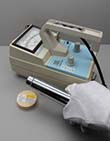
The Physics Section provides research and development in forensic sciences using applied physics. The research is conducted on wide range of topics such as visualization of latent fingerprints and residues in crime scene using lasers, radiation measurements and evaluation or development of equipment against radiological or nuclear threat. In addition, we provide scientific examination and analysis such as functional inspection of laser devices to law enforcement community.
Research and Development of Visualization Methods of Fingerprints using Lasers
We have been conducting research on visualization of latent fingerprint and residues in crime scene using optical techniques such as lasers. We investigated optimal conditions of visualization for each sample of different kind using a nanosecond-pulsed tunable laser from ultraviolet to infrared. In addition, we have studied detection methods for fingerprints with a fast-gated intensified CCD camera by time-resolved spectroscopy, which has the advantage of selectively detecting fingerprints from background materials. Furthermore, we have been studying on a fingerprint imaging method by a femto-second laser system and a hyperspectral imager. These optical methods have the advantage of examining samples non-destructively, and are expected to contribute as new methods for fingerprint detection.
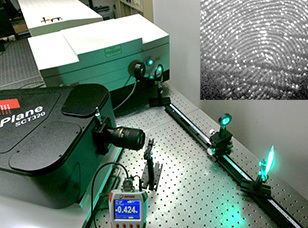
Time-resolved spectroscopy system using tunable laser system
Fingerprint fluorescence image is shown in the upper right corner.
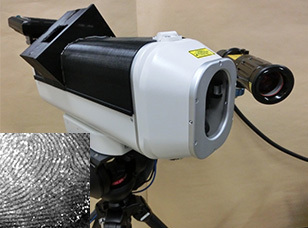
Hyperspectral imaging system
Fingerprint fluorescence image is shown in the lower left corner.
Research and Development of On-site Detection of Radioactive Materials and Nuclear Forensics
As countermeasures against terrorism such as dirty bombs that diffuse radioactive materials with explosives, we have been developing equipment for the search of radioactive materials, evaluating on-site equipment, developing training methods, and conducting simulations on damage prediction. In addition, we have been developing on-site detection technology and analysis methods for nuclear forensics that determine the origin and history of nuclear material collected at the site.
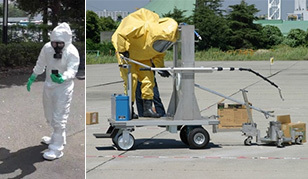
Actual training using the developed equipment
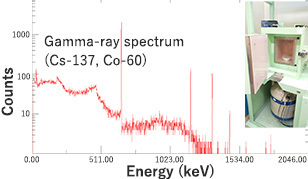
Gamma-ray spectroscopy
